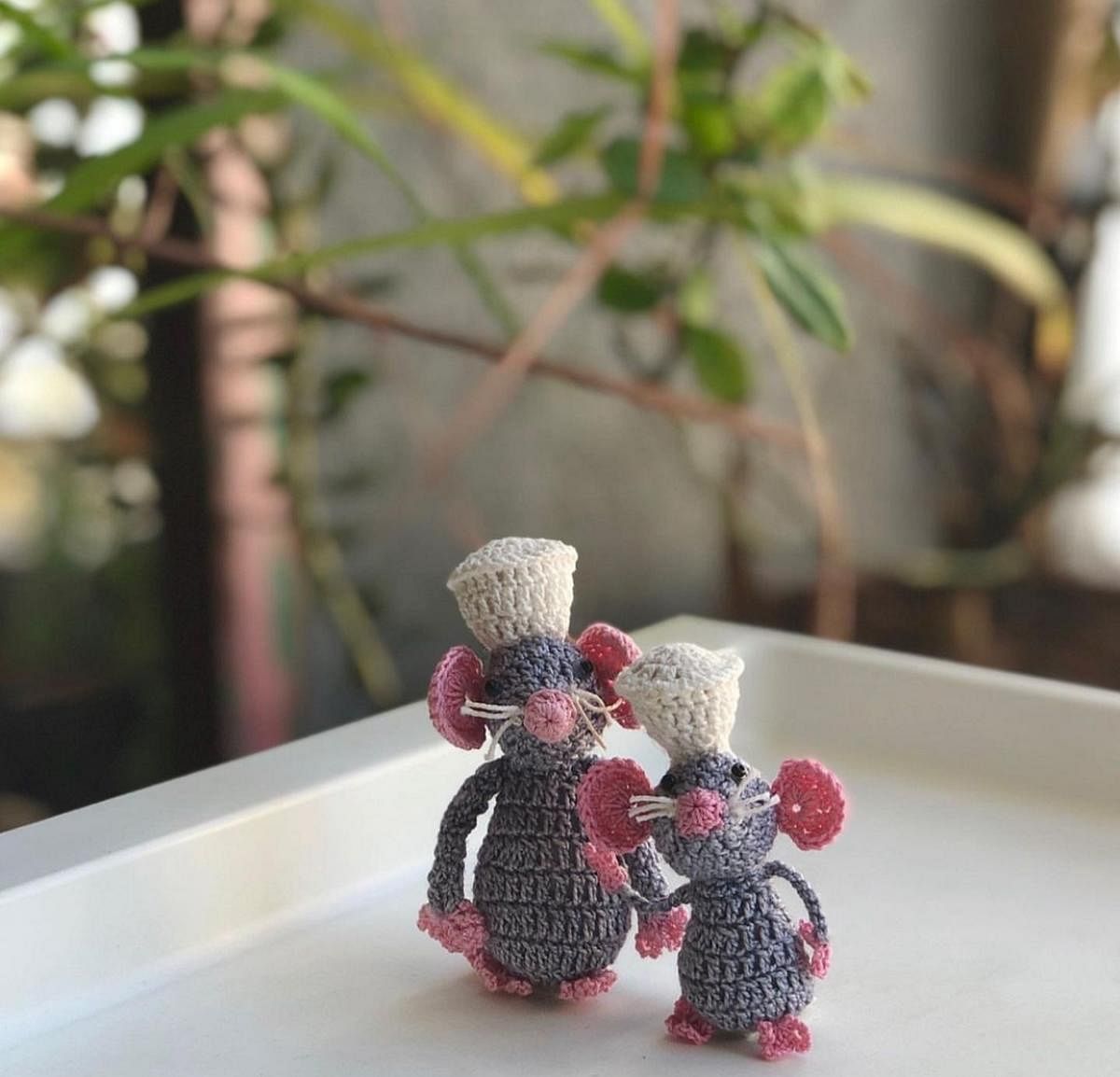

Stuffed toys are always a hit. But, a particular kind, all the way from Japan, has taken the Internet by storm. Go to any craft website or social media page, and you are sure to come across ‘amigurumi’ toys.
An ancient Japanese art of crocheting or knitting small stuffed yarn creatures, amigurumi is a compound of two Japanese words — ‘ami’ meaning crocheted and knitted and ‘nuigurumi’ meaning stuffed doll. Most commonly found stuffed toys in this form are cartoon characters, animals and food items.
World of amigurumi
The differences between amigurumi and crochet are minute. “Amigurumi can be created both out of crochet and knitting, and uses techniques and stitches from both. However, amigurumi refers specifically to 3D objects, while the crochet technique can be used for 2D projects (like scarves and hats) also,” explains Ramya Jyothi K from Chennai. She runs Ethereal Flutters, a business selling amigurumi creations on Instagram.
“For crochet we use yarn, hook, tapestry needle and stitch markers. These materials plus safety eyes and stuffing are used for amigurumi,” she adds. For most of it, unlike regular crocheting, amigurumi creates a round base form — popularly known as the ‘magic circle’ — that can then be stuffed and made into a small toy. ‘Single crochet’, a widely used basic crochet stitch, is another fundamental part of amigurumi. “Single crochet is one of the easiest and most important stitches that one should learn. An amigurumi toy can be made solely using this stitch and its variants. It is like a foundation stitch, once you master this one, other stitches come easily,” adds Ramya.
The ‘kawaii’ (cute) culture of Japan is slowly making its way to India, she believes. “Amigurumi is gaining popularity in India through social media. People are starting to learn about the artwork and placing custom orders,” she adds.
In addition to whimsical animals and dolls, Ramya makes replica figurines on order and even customises them. “A customer once commissioned a replica doll of a friend. It is the most difficult figurine I have made as I had to design everything from the hair to shoes. I had to redo a lot of details to match the photograph of the person. It took me around 14 days to create an accurate replica,” she adds.
Whimsical miniatures
The Gen Z and millennial crowd are especially fond of amigurumi miniatures. Bengaluru-based artist Padmini Rao creates miniatures of everything from Llamas to Yoda from popular sci-fi franchise ‘Star Wars’. “They are usually one to two inches tall and can be turned into magnets, pins, or even just showpieces for your desk,” says the 31-year-old.
Mushrooms happen to be her latest muse. “Recently, I’ve been creating mushrooms of all shapes, sizes and colours. There is something magical about them, and the whimsical nature shines prominently through amigurumi,” she adds.
It takes her approximately two hours to complete a miniature. “While amigurumi made from thicker yarn is also popular, I use a fine thread to give the miniatures a cleaner look and tight finish,” she adds.
Crochet and knitting teacher Swarna Rao, a Bengaluru resident, observes, “Along with the interest in buying amigurumi stuffed toys, the younger generation is also interested in learning the art of making them.”
Favourite among parents
Old-school crocheted rag dolls are a recent trend that have emerged in the amigurumi market. “Amigurumi has become quite popular in the baby toy market. Especially simple dolls that come with crocheted dresses and other accessories,” says Padmini. She has also created a range of baby cot mobiles with miniature amigurumi figurines.
Thiruvananthapuram-based Vineetha Nair has been making these toys (mostly on the animal theme) since four years. “Most of my customers send designs of what they want and I work on them. Some like animal designs, while other designs are inspired by cartoons,” she says.
Her most moving designs are finger puppets. The designs can take around five hours to three days to complete. “Time spent on designs depends on its complexities. A giraffe finger puppet could take a lot of time, as the spots on it, its antlers and ears are all made separately and then put together. However, mostly bigger toys take more time to finish,” she adds.
Vineetha’s latest popular design was a set of dolls she made for the Christmas crib. “The set included Joseph, Mary holding baby Jesus and two animals. Each doll took around two days to create,” Vineetha adds.
Amigurumi toys are sustainable and toxin-free in nature, points out Swarna.
“They are usually made from pure cotton yarn and are much safer for children. They are free from plastic and other chemicals, plus they can also be easily cleaned. This has made them a favourite among parents, as they last longer,” she says.
Tips from experts
Start with the magic circle.
If you are new to the craft, begin with a bigger hook (3 to 6 mm) as it offers a good grip.
Focus on perfecting the single crochet stitch.
Stitch markers are a must.
Always remember to count your stitches.
Must-have tools
Crochet hook
Cotton yarn
Polyester filling
Stitch markers
Scissors
Tapestry needle
Wallet factor
Amigurumi miniatures cost
between Rs 100 and Rs 400.
Bigger products like stuffed toys and baby mobiles cost between
Rs 1,000 and Rs 2,500, depending on customisation.